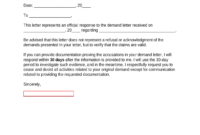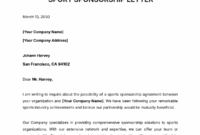Letting an employee go is undeniably one of the toughest decisions any business leader or HR professional faces. It’s a situation fraught with emotional complexity, legal implications, and the heavy responsibility of impacting someone’s livelihood. Yet, sometimes, for the health and integrity of your organization, it becomes a necessary step. When an employee’s actions or inactions fall short of company standards, particularly after due process, a formal termination for cause is required.
Navigating this sensitive process demands not only empathy and professionalism but also meticulous attention to detail. A poorly handled termination can lead to significant legal challenges, reputational damage, and even impact employee morale. This is where having a clear, legally sound termination letter template for cause becomes an indispensable tool, ensuring you communicate the decision effectively, legally, and with the necessary documentation.
Crafting Your Termination Letter for Cause
Creating an effective termination letter for cause is much more than just stating that someone’s employment is ending. It’s a critical legal document that serves as a formal record of the termination, outlining the reasons, the effective date, and crucial information for the departing employee. Its purpose is to clearly and unambiguously communicate the decision while protecting your company from potential disputes. Clarity, professionalism, and adherence to legal standards are paramount in this document.
The letter should be direct yet respectful, leaving no room for misinterpretation. It must accurately reflect the facts of the situation and avoid any language that could be perceived as discriminatory, vague, or subjective. Remember, this letter might be scrutinized in legal proceedings, so every word counts. It’s not the place for emotional language or personal opinions, but rather a concise statement of facts and company policy application.
Key Elements to Include
- Employee’s full name and address
- Company name and address
- Date of the letter
- Effective date of termination
- Clear statement of employment termination
- Specific reasons for termination often referring to company policy violations or documented misconduct
- Details regarding final pay, accrued vacation, and severance if applicable
- Information about continuing benefits, such as COBRA, and retirement plan options
- Instructions for the return of company property
- Reminders of any existing confidentiality agreements or non-compete clauses
- Information about unemployment compensation eligibility
- Signatures of authorized company representatives
Crucially, the “cause” for termination must be specific, well-documented, and align with your company’s established policies. This isn’t about a general feeling but about verifiable actions or inactions that violate employment agreements or company rules. Examples of cause might include gross misconduct, repeated policy violations after warnings, theft, fraud, insubordination, or serious dereliction of duty, all of which should have a paper trail of incidents and disciplinary actions. Your letter should reference these documented events and policies directly.
Legal Considerations and Best Practices
Beyond the content of the letter itself, the process surrounding a termination for cause is equally vital. Failing to follow due process or company policy can expose your business to significant legal risks, including claims of wrongful termination or discrimination. Therefore, before even drafting a termination letter template for cause, it’s imperative to ensure all preliminary steps have been meticulously followed and documented. This includes thorough investigations, documented warnings, performance improvement plans, and consistent application of company policies across all employees.
One of the most critical aspects is maintaining a comprehensive and accurate record of the employee’s performance, behavior, and any disciplinary actions taken. This paper trail serves as irrefutable evidence should the termination be challenged. It demonstrates that the decision was not arbitrary or discriminatory but based on objective facts and established company standards. Without solid documentation, your company’s defense against a legal claim becomes significantly weaker, regardless of the validity of the cause.
Consistency in policy enforcement is another cornerstone of legally sound terminations. If similar infractions have been treated differently for other employees, it could create the appearance of discrimination. Ensure that your company’s disciplinary actions and termination decisions are applied uniformly and fairly to all employees, regardless of their protected characteristics. This principle helps to safeguard against claims of bias and reinforces a workplace culture of equitable treatment.
Finally, the delivery of the termination letter and the exit meeting itself should be handled with utmost professionalism and discretion. Conduct the meeting in a private setting, keep the conversation concise and factual, and have a witness present to corroborate the discussion. Be prepared to answer questions about final pay and benefits, but avoid getting drawn into arguments or renegotiations. Providing a copy of the termination letter and reviewing key points briefly ensures the employee has all necessary information.
- Always consult with legal counsel or an HR expert before finalizing and delivering a termination for cause.
- Ensure all company policies and employment laws were strictly followed throughout the disciplinary process.
- Maintain comprehensive documentation of all incidents, warnings, and performance discussions.
- Apply company policies and disciplinary actions consistently across all employees.
- Plan the exit meeting carefully, keeping it professional, brief, and private.
- Have a witness present during the termination meeting.
Navigating the challenging process of employee termination, especially when it’s for cause, requires a blend of legal prudence and human sensitivity. A thoughtfully prepared and legally compliant letter, coupled with a well-managed process, helps ensure a professional and respectful separation while safeguarding your organization’s interests. It allows all parties to move forward with clarity, minimizing lingering uncertainties and potential disputes.


